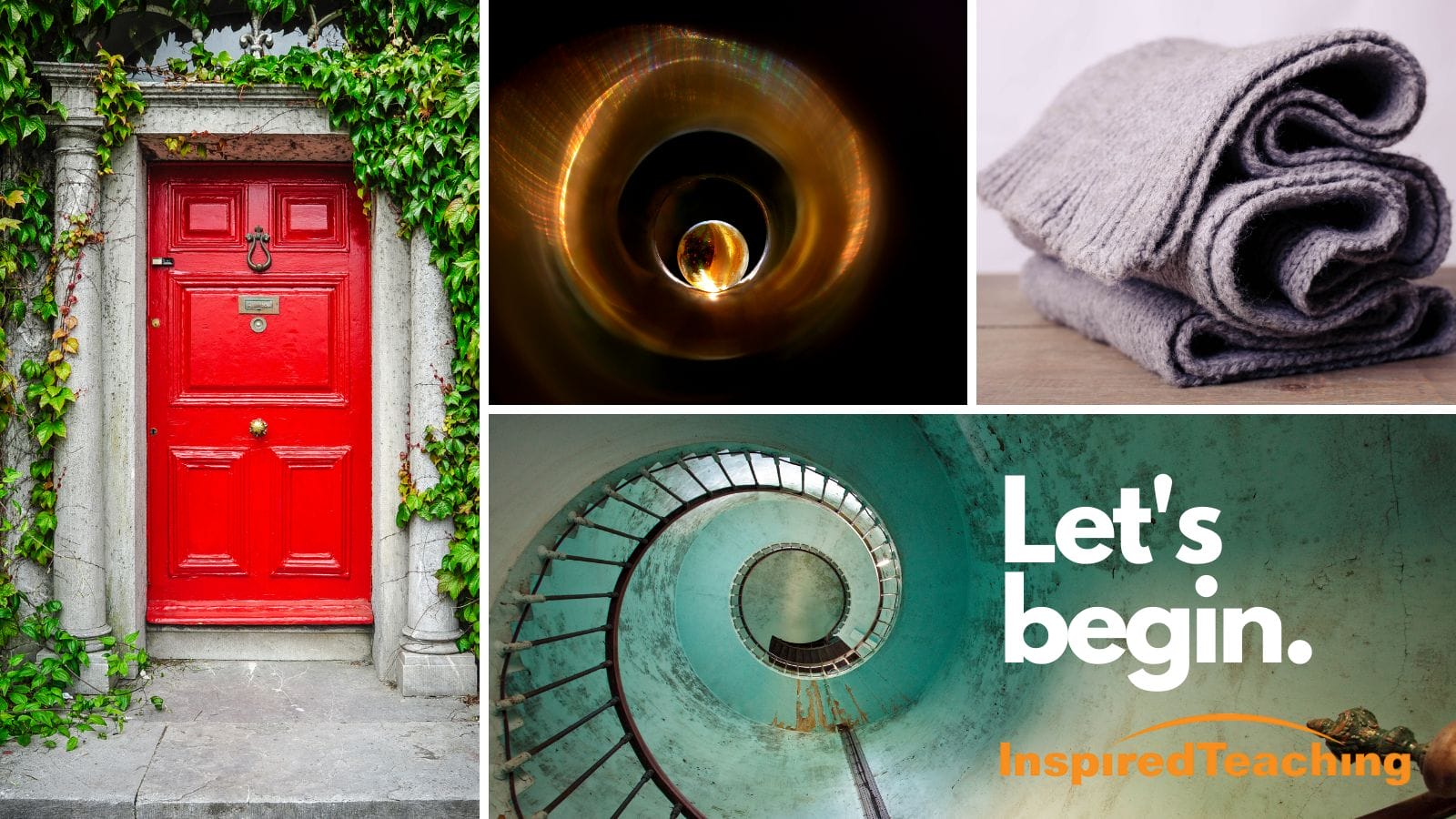The following activity is part of a series we’re creating to support students, teachers, and caregivers, during this unprecedented time. Read more about the project here. If you try this activity with your student(s), we’d love to see what you do. Share your journey via the #Inspired2Learn hashtag on your preferred social platform.
Created by: Judy White
Discipline: All
Age level: All
Time: 20-40 minutes
Materials: Something to write with. (Can be done entirely online.)
One way to stimulate our imaginations is to relax and let our minds flow uninterrupted. Automatic writing gives our minds the space to do just that by offering a series of prompts that guide us through a line of thinking that is entirely unexpected. When you do this with your students, think through and simplify your explanatory language (as much as possible) so the creation process is free to flow. The goal of these prompts is to see where they lead us. Later, students can think about structure or plot, or action.

What to do:
Invite learners to use writing utensils that work best for them, for some this will be pen and paper, for others, it may be a digital page. For younger students, it may work best to draw their thinking on a big sheet of paper.
Guide learners in writing through the following verbal prompts. Pace the prompts so there is plenty of time to write between them.
Let’s begin.
Write down the name of a place REAL OR IMAGINARY.
Write down a time – it could be a time of day, could be an era in the past, present, or future.
IMAGINE YOU ARE In this place, You hear a sound. What is the sound? What– OR WHO? made the sound.
Still in this place, YOU SEE A LIGHT. WHERE IS IT COMING FROM? WHAT IS CAUSING IT? (Take several seconds to write your responses.)
You follow the light. Where does it lead you? And what do you discover?
You sense something — or someone — behind you. You turn, and what do you see?
YOU SEE A STAIRCASE. NOTICE WHAT’S AROUND YOU – WHAT THE STEPS LOOK LIKE. YOU WALK UP THE STAIRCASE, AND AT THE TOP, YOU SEE SOMETHING SURPRISING. WHAT IS IT?
As you look around, You see a door you hadn’t noticed before. SLOWLY, You open it, and you see something. What do you see? WHAT DO YOU DO?
You smell a smell. What– OR WHO made the smell?
You see a scarf lying on the ground. When you pick it up, you discover it’s magic. Who might it belong to? What can you do with it?
Bring your story to an end…
Look at what you’ve written. Now, give your piece a title.
If you click the play button below you can listen to an audio file of the directions being read. This file was recorded at an Inspired Teaching Institute in December 2020.
After learners have gone through this writing exercise they can go back and refine what they have written. Reflection questions for writers might include:
- How did you feel at the start of this exercise and how did you feel at the end?
- Did you write anything that surprised you?
- Would anyone like to share what they have written?
- Invite all participants to share their titles.
- What did you notice about your thinking as you were writing?
- Where might you take what you have written next?
Extensions:
The prompts above are only one option.
- You can adjust the prompts.
- You can do this exercise over and over with different prompts, and even with the same prompts which will still, likely, elicit different responses.
- You can use this structure as a daily or weekly exercise to build imagination, comfort, and skill in writing, etc.
- You can have students add their own “imagines” after you’ve primed the pump and called attention to their senses the potential for surprises, etc. You could do this in the moment or invite students to submit prompts in advance that you curate into a new exercise.
- You can situate the experience in the context of what you’re studying with students at the time. For example, “We are in the Land of Nouns and Verbs” or “We are in the middle of Pythagorean Theorem Country” or “The year is 1865 and the Civil War has just ended.” Or invite students to choose a starting point tied to your curriculum.
- Consider adding some unexpected physical or emotional reaction into the prompts such as, “You begin to laugh. Why? What’s causing you to laugh?”
Inspired Teaching Connection:
Learners are creating something with Purpose (a story, poem, or narrative of some sort). The purpose of the exercise is also to learn that their imaginations are unique and a rich source to explore. Pursuing this purpose requires Persistence (writing through to the end) and Action (writing is always an active endeavor.) This is intense but Joyful work. Because the writers are all creating something entirely from their own imaginations, this experience positions them as Experts of both the medium and the message. Inquiry, and Imagination, are also hard at work.
See our instructional model here.
